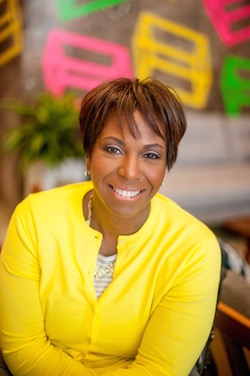 Happy Spring, Colleagues!
Happy Spring, Colleagues!
It’s been a while since I was last in touch.
There’s been a lot going on with me – personally and professionally – and the change of seasons compelled me to focus on a few big-time accomplishments. A few highlights included:
- My daughter and I moved twice in 8 months (BTW, moving is the worst thing…ever).
- My daughter started 9th grade in a new school and a new city and has adjusted well.
- We conducted training for customer-facing staff, as well as executives, at the Straz Center and Zappos.
- Began a strategic alliance with GettingHired to develop content.
- Spoke at the National Diversity Council Conference.
- Landed Nike as a client!
- We have led disability inclusive strategy sessions for a global hotel company.
- Developed and implemented a national outreach strategy for the Zappos Adaptive and Runway of Dreams Fashion Show.
- Conducted a market entry assessment for a healthcare company.
- Began a new project focused on disability inclusion at a large university.
- Launched the Disability Inclusion Blueprint, which you can still use to guide your internal discussion on disability inclusion.
Late night homework check-ins with my daughter, content development, business travel, and networking have also been a part of the mix. Through the transitions and busy schedule, there remains an undercurrent of on-going gratitude.
I am also thankful for the positive energy I feel in the shifting discussions I am having with decision-makers and corporate leaders who are intentional about becoming disability inclusive. They’re aware of what their company has not done to be engaged in disability employment, marketing, and customer service; and they’re open to taking steps to address this gap throughout their enterprise.
I’ll share a few tips I provided during a recent talk to help an organization move beyond compliance to disability inclusion:
- Executive Team Support: Make sure your disability inclusion efforts have C-Suite Support – with staff and financial resources.
- Internal Team: A best practice is to create a cross-functional team, with employees from various departments that meet monthly or quarterly to develop and implement the company’s disability inclusion strategic plan that integrates employment, marketing & communications, and customer experience.
- Define KPIs: Measuring disability inclusion is CRITICAL for sustainability. Without key performance indicators, your efforts will solely be a feel-good initiative, that will end when there are personnel shifts or budget cuts. The internal team can define, with the blessing of the C-Suite, what metrics will be used to determine success.
- Community Engagement: Without community engagement, it is challenging to build a brand-loyal, authentic relationship with customers with disabilities. Community engagement can take various forms, such as: hosting events for disability organizations, having your staff volunteer with an organization, creating an advisory board, joining a board, or even meeting with local disability organizations and learning about their priorities. Did you notice that I didn’t mention contributions or money one time? Be creative and build that bridge of understanding and support.
- Rule of 7: Essentially, the Rule of 7 is a marketing principle that states that prospects need to come across an offer at least seven times before they notice it and start to take action. The visibility achieved through targeted promotion and outreach makes consumers take note of your company’s offer and commitment to the disability community.
- Consistency: For disability inclusion to really ‘stick’ in a company, there has to be consistency and intention throughout the enterprise. I recommend reaching consumers and prospective employees multiple times, through various channels. Data from HubSpot shows that companies that blog around 16 times or more per month get 3.5 times more traffic and 4.5 times more leads than businesses that blog less than four times a month. No matter what your disability inclusion strategy consists of, the importance of internal and external frequency has to become a priority.
I hope these tips give you something to consider as you continue to strengthen your disability inclusion efforts. If you’d like to discuss further, don’t hesitate to reach out to our team at info@disability-marketing.com.
My best,
Carmen Daniels Jones
President/CEO
Solutions Marketing Group